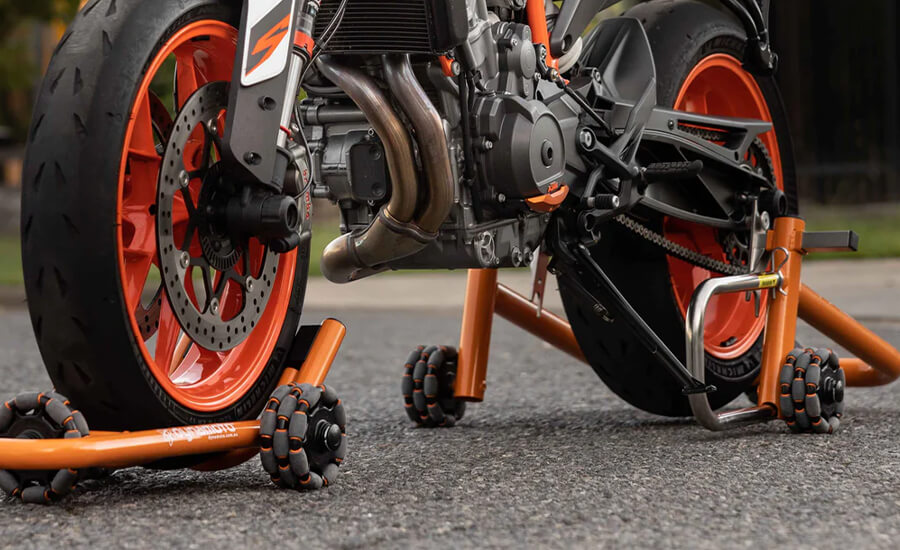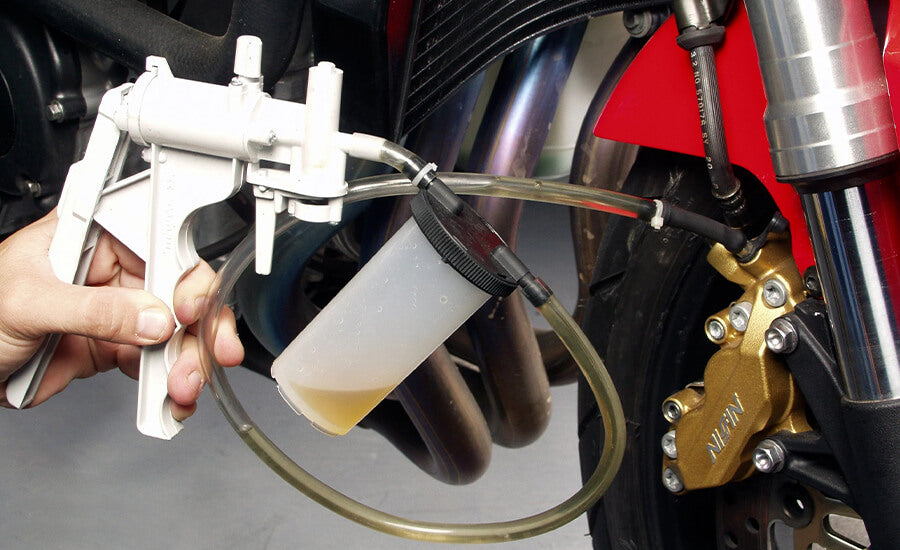Table of Content
Part of being a motorcyclist is taking time to maintain and check up on your two-wheeler’s condition. Motorcycles are motor vehicles that are carefully built to balance speed, power, balance, and comfort. Most of them can carry your belongings over distances due to luggage options, such as saddlebags, tour packs, and trunks. Though they may differ in their design, brand, and functions, all models are reliable means of transportation. However, no matter how carefully or often you ride your motorcycle, it will start to break down due to extended use. However, signs of mechanical issues can be hard to notice, but if they are left unchecked for too long, they can result in damage that could compromise your vehicle’s performance.
It is best to inspect all of your motorcycle’s parts regularly by following a strict maintenance schedule. Depending on which model you own, the frequency you have to look over your ride may differ. Regardless, doing so will help you spot any potential issues ahead of time and fix them before they become worse. If you find anything wrong with the essential components, like the seat, handlebars, etc., you might have to take matters into your own hands.
Though most riders ask a professional mechanic to figure out and fix whatever is wrong with their vehicles, others prefer not having to pay for services and apply the repairs themselves. But for that to be possible, there is a required inventory of motorcycle tools every rider needs to have in their possession.
1. Motorcycle Stands

To access the components deeper within your motorcycle’s frame, it has to be standing in place while upright. A kickstand causes the motorcycle to lean to the side and may not keep it from falling over while you provide maintenance. Meanwhile, a motorcycle stand keeps your motorcycle stable while allowing you to access the vehicle from every side. Depending on the type of motorcycle stand you use, it can be fitted underneath the motorcycle’s rear, center, or front.
2. Wrenches

To loosen or tighten any nuts or bolts, you will need a set of wrenches with heads of different sizes and shapes. Your toolbox should at least include the following types of wrenches:
- Torque Wrench: A torque wrench is built with mechanics that ensure a precise application of pressure when tightening bolts. Also, when turning, the handle will catch on the mechanism, preventing the need to keep adjusting the position of your hand.
- Socket Wrench: A socket wrench can have multiple heads of varying sizes attached and is best suited for recessed nuts or bolts or those at awkward angles.
- Offset Wrench: An offset wrench fits tightly around fasteners and helps you better evaluate the amount of pressure applied based on feel. This type of wrench is best suited for recessed fasteners.
- Ratcheting Combination Wrenches: Ratcheting combination wrenches have the smallest heads that allow you to access fasteners in tight spaces, allowing you to turn them even with little clearance.
3. Tire Pressure Gauge

If your motorcycle tires do not have adequate air pressure, this will negatively affect your vehicle’s overall performance. Whenever you are in your garage or on the road, take time to check the state of the tires using a tire pressure gauge. If you had recently traveled over rough terrain or sharp debris, checking tire pressure will help determine whether air is leaking through a puncture.
Before you start, check the motorcycle tires’ specifications, including their maximum air pressure capacity. Unscrew the cap covering the valve on the tires, and insert the tube fully so that air does not escape. Then look at the gauge and wait until the measurement settles on a single value.
4. Screwdrivers

Necessary to loosen or tighten screws that secure vital components like the headlight, battery, etc., you will need a set of screwdrivers of varying lengths with different-sized heads. You should acquire multiple versions of the same screwdrivers with differently-sized handles and shafts. Make sure that your toolbox at least has the following screwdrivers:
- Flathead Screwdriver: The flathead screwdriver has a flat wedge-shaped tip best suited for screws with rectangular grooves.
- Phillips Screwdriver: The Phillips screwdriver has an X-shaped tip best suited for screws with cross grooves.
- Allen Screwdriver: The Allen screwdriver has an L-shaped tip best suited for screws with hexagonal grooves.
5. Axle Tool or Tire Iron

If motorcycle tires become too worn down or damaged, they need to be removed and replaced with a fresh set. Though it is possible to use wrenches to remove the bolts keeping the tires in place, you may find it easier to use either an axle tool or a tire iron.
An axle tool is a small multilayered tool with multiple hollow hexagonal grooves. Along the sides of each segment is a number representing the axle size that it fits around. This tool helps remove the axles that secure the tires onto your motorcycle.
A tire iron is a long metal pipe with a sharpened edge, with its end pressed between the tire and wheel. Functioning as a fulcrum, pushing down on the tire iron will separate the tire from the wheel rim pressing against it.
6. Chain Breaker & Riveter

If you operate a motorcycle that runs on a chain drive system, you will need a chain breaker to remove it when it becomes damaged or rusty. Because the steel chain is difficult to remove safely by hand, the best way is to use a chain breaker to break one of the rivets that keep it together.
After you get a new chain, you may need to adjust its length to match the holes where the sprockets are inserted and fit within the drive train system. You can use a chain breaker to cut the ends so that the chain is shorter. When you have determined the chain is the correct length, you can install it on your motorcycle and connect the chain using the riveter to fuse both ends.
7. Multimeter

For your motorcycle to run correctly, its electrical system has to be in working order. From the controls to the brakes, most of the motorcycle’s essential functions only work due to the battery. To measure how much battery life is left, you need a multimeter that can at least read DC voltage, continuity, and resistance.
Connected to the multimeter via a red and black wire, the red and black needles connect to the points where electrical charges pass through. The rubber along the wires and the needles helps keep you from electrocuting yourself. The multimeter is used to check the remaining voltage in the battery and test any electrical systems.
8. Cable Luber

The cables running along the length of your motorcycle connect the controls, the battery, and the electrical system. If they suffer damage or become worn out, the electrical charge will not pass through, and the controls will become slow to respond or not respond at all. A cable luber helps to insert lubricant and cover the interior of the cables.
A cable luber is a small box-shaped attachment with two screws on top, with the center having a narrow circular tube, and the bottom having a curved base. You attach the cable luber to the end of the cable and tighten the two screws to fasten it. You then insert the tube connecting to a bottle of lube then gently spray the bottle until an adequate amount of lube goes along the length of the cable.
9. Tire Inflator or Compressor

When your motorcycle tires have become deflated or flat, you will have to refill them using an inflator or compressor until they are back to an appropriate level of air pressure. Make sure that you only fill up to the minimum air pressure; do not overfill since the tires may lose grip or be more susceptible to punctures.
The inflator and compressor require using your hands or powered by electricity to pump air into the tires. The difference between the equipment is that the compressor is more versatile than the inflator, as the former can also be used for air tools and motorcycle lifts as well. You should always keep it with you in your motorcycle saddlebags.
10. Brake Bleeder

Whether your motorcycle is equipped with a standard ABS or not, you ensure better safety for yourself and others sharing the road by checking that the braking system is responsive. Unfortunately, any air bubbles trapped in the hydraulic brake system will cause the braking to become stiff or slow to respond. Using a brake bleeder will help safely release the air bubbles and drain any excess fluid in the hydraulics.
A brake bleeder is a small hand-held pump with clear plastic tubes connected to a small container to hold all the excess fluid. Squeezing the two handles along the bottom will help siphon out the air bubbles and the excess fluids as long as the brake bleeder’s opening is inserted into the tire’s valve. The pressure gauge at the top will help measure when the hydraulic system has returned to adequate levels.
11. Takeaway
Though maintaining your motorcycle can be the dullest part of being a motorcyclist, it is a necessary responsibility to ensure you get the most out of your time with your favorite ride. Though your motorcycle may seem fine most of the time when on the road, you can never be sure if something might be wrong until you take a closer look.
If you are careful when on the road, then you will likely not find any broken or damaged components at the end of most maintenance checks. However, if you discover any issues that you can handle alone, then you want to be sure you have all the necessary tools to get the job done.
If you currently own or plan to purchase a motorcycle, take a moment to look through your inventory and make sure that you possess the top 10 must-have motorcycle tools.












Leave a comment
All comments are moderated before being published.
This site is protected by hCaptcha and the hCaptcha Privacy Policy and Terms of Service apply.